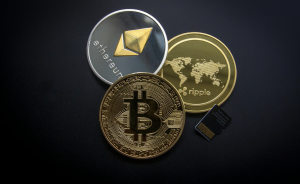
How to Choose a Good Crypto Exchange
Choosing a crypto exchange is a bit like choosing a travel companion. It’s not just about where you’re going—it’s about how safe, reliable, and enjoyable the journey is along the way. Whether you’re new to crypto or looking to upgrade your trading setup, the exchange you pick will shape your experience in big ways.
Some platforms promise everything—low fees, huge token selections, lightning-fast apps—but not all of them deliver. It helps to start with a little inspiration. Sites like coins.meme give you a fun look at what tokens are gaining attention and which exchanges support them. But once you’ve seen what’s trending, it’s time to dig into the details that actually affect your investment.
Let’s break it down.
What kind of user are you?
Taking the time to clarify your goals can make all the difference. When you’re overwhelmed by options, improving your mental clarity helps you focus on what really matters—whether that’s ease of use, security, or access to niche coins.
Before you even compare platforms, ask yourself what you’re hoping to get from the experience. Are you just looking to buy and hold Bitcoin or Ethereum? Planning to experiment with meme coins or altcoins? Want to actively trade, or just set and forget?
Your goals shape your priorities. A beginner might need a clean interface and strong support. A more experienced user may look for advanced trading tools, deep liquidity, or access to a wider range of coins. There’s no one-size-fits-all answer—but there is a best fit for your needs.
Don’t overlook security
Crypto might feel like the Wild West at times, but the best exchanges take security very seriously. The last thing you want is to wake up and find your funds vanished or locked up in a support nightmare. So, it’s worth doing a little homework.
Has the exchange ever been hacked? If so, how did they respond? Are they transparent about how they protect users’ assets?
A good sign is when an exchange stores most of its crypto in cold wallets (offline), requires two-factor authentication, and gives users tools like withdrawal whitelists. If you find yourself hunting for this info on their site, that’s a red flag.
Fees are sneaky—read the fine print
One of the most common surprises for new users? Fees.
Even when exchanges advertise “zero fees,” there’s often a catch. Some charge fees per trade, while others add a spread, meaning the price you see isn’t quite the price you get. Withdrawal fees can also vary widely, especially with different coins or bank transfer methods.
Here’s what you want to check:
- Trading fees (especially maker/taker fees for active users)
- Withdrawal and deposit costs
- Hidden spreads in buy/sell prices
Sometimes, paying slightly higher fees is worth it if the exchange offers better support, security, or ease of use. Just make sure you know what you’re agreeing to.
Liquidity and reliability matter
If you’ve ever tried to sell a coin only to find there’s no buyer, or that the price jumps dramatically, you’ve likely been on a low-liquidity platform.
High liquidity means faster trades and more stable pricing. It also means fewer delays and less frustration during volatile market moments. Larger exchanges tend to have better liquidity, but always double-check the volume on the coins you care about.
Reliability is just as important. You want an exchange that can handle high traffic without crashing. Downtime during a market drop—or pump—can cost you real money.
Regulations add peace of mind
While crypto operates across borders, regulation still matters. Exchanges licensed in jurisdictions like the UK, the US, or the EU are generally more accountable and follow stricter protocols. That’s especially important if something goes wrong or if you need to contact support.
Of course, not all popular exchanges are regulated in your country, so weigh the pros and cons. Just know that “decentralised” doesn’t always mean safer.
Don’t ignore the user experience
You’ll be spending a fair bit of time on your exchange of choice, so it should actually feel good to use. Some platforms are cluttered or slow, with confusing order books or buggy apps. Others make the process feel smooth from the first tap.
Try this: deposit a small amount first and run through a few basic tasks. Buy a token, send it to a wallet, withdraw it, or try contacting support. It’s the best way to see if the platform meets your expectations or throws up red flags early on.
Also, take a look at what others are saying. Browse the latest news, read user reviews, or join crypto communities. You’ll quickly get a sense of how trustworthy—and responsive—an exchange really is.
It’s easy to get swept up in flashy platforms or influencers hyping new exchanges, but your own research matters more. Building better digital habits—like checking multiple reviews and reading the fine print—can save you from costly mistakes down the line.
Coin variety and flexibility
If you’re only trading Bitcoin or Ethereum, most exchanges will do the job. But if you’re after altcoins, meme tokens, or DeFi projects, coin selection becomes more important. Some platforms limit listings for compliance, while others offer access to trending or niche tokens.
Always check if the exchange supports the assets you’re interested in and allows easy withdrawals. A good platform should make crypto simpler, not more stressful. Let the hype show you what’s hot, but let your research guide your decisions.
